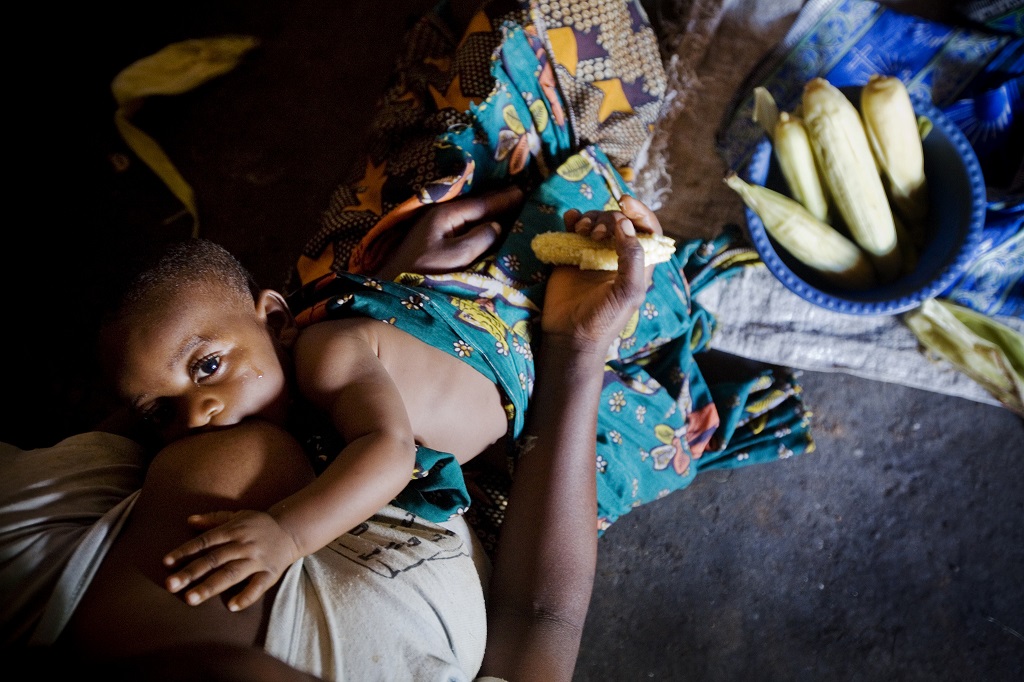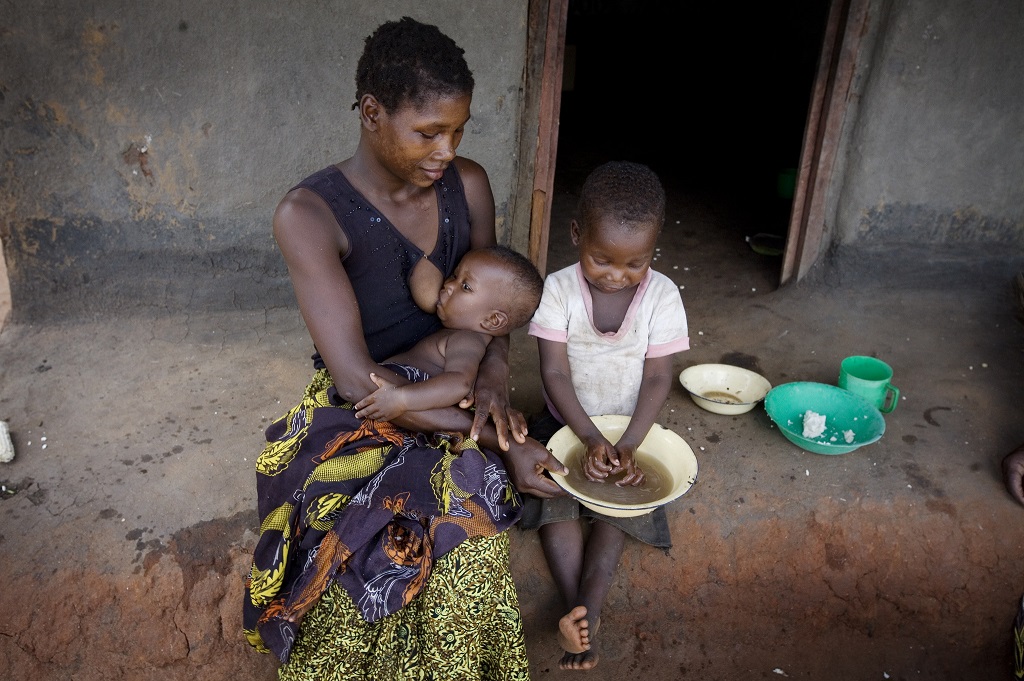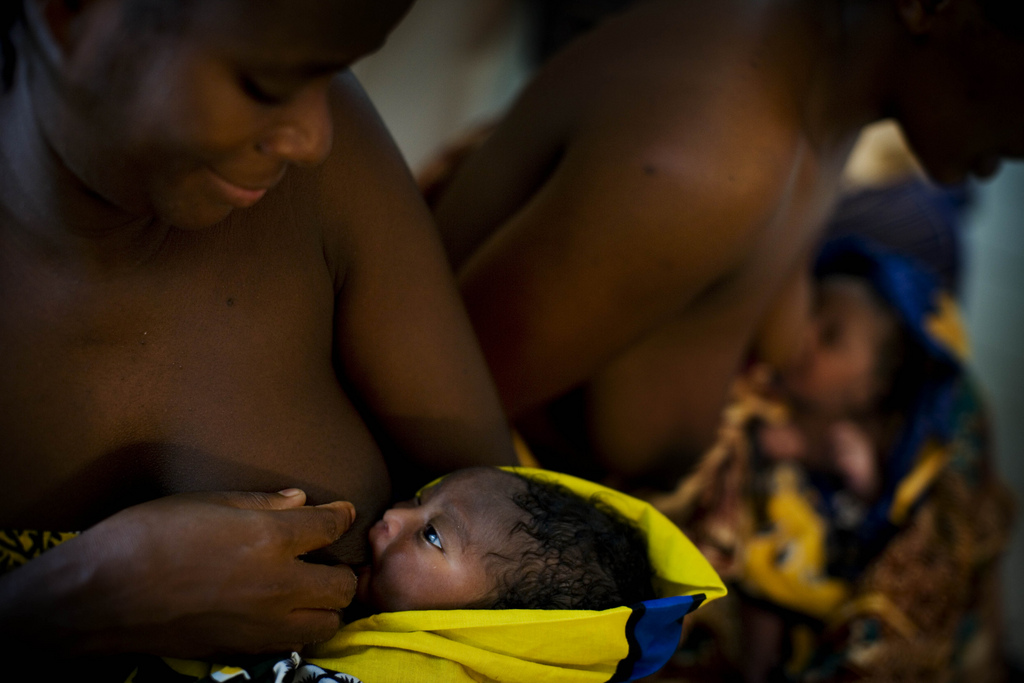This blog also appeared on the Healthy Newborn Network website.
In Tanzania’s Lake Zone, only about one-quarter of married women use a modern family planning (FP) method. And use of the Lactational Amenorrhea Method (LAM) – a natural, temporary contraceptive method which is highly effective when practiced correctly* – is even lower: approximately half of 1%.
When it comes to infant and young child nutrition, the picture isn’t much rosier. More than 40% of children under 5 in the Kagera region of the Lake Zone are stunted, and 4 in 10 infants under 6 months of age are given food and liquids other than breastmilk.
The benefits of exclusive breastfeeding, and links between infant and young child nutrition and FP, are clear. Breastfeeding suppresses women’s return to fertility after childbirth, and acts as an effective FP method when the LAM conditions are met. Improved birth spacing also benefits child growth and wellbeing. However, in spite of these demonstrated links, gaps between services – and in understanding of relationships between nutrition and FP, including LAM – are widespread.
In order to address the lagging FP and nutrition indicators in the Lake Zone of Tanzania, USAID’s flagship Maternal and Child Survival Program (MCSP) is working with the Ministry of Health, Community Development, Gender, Elderly and Children to understand barriers to optimal practices, and design new approaches for linking and revitalizing services. As part of this process, the Program conducted a study in two regions of the Lake Zone (Kagera and Mara) to explore current FP and maternal, infant and young child nutrition (MIYCN) practices, as well as barriers and motivating factors for healthy practices.
Discussions with mothers and fathers of children under one year, their mothers and mothers-in-law, community influencers, and health workers were eye opening, and informed the design of a program approach to revitalize FP and MIYCN linkages including LAM. As the world turns its attention to World Breastfeeding Week, and specifically the relationship between the Sustainable Development Goals and breastfeeding, the results of the study are particularly timely.

What Women + Families Told Us
Less than half of mothers reported initiating breastfeeding within the first hour of birth. Delays were attributed to a number of factors – from the mother needing to eat and bathe, to misinformation on giving newborns water first, to a lack of understanding of the importance of immediate breastfeeding.
“The type of food that she eats can spoil the quality of breast milk. A mother can end up with very light milk because the food is of poor quality.”
– Grandmother
The main reason cited for not exclusively breastfeeding was that women believed their breast milk was insufficient. As a result, many mothers reported introducing cow milk, tea, porridge, juice and soda before their infants were six months old.
Some mothers reported taking their babies to the field as they work, especially if they are exclusively breastfeeding. Other mothers said they left their children with family members while engaging in income-generating activities, which impeded exclusive breastfeeding.
“[My mother-in-law] stays home to care for all the children around and cooks porridge and tea for them.”
– Mother of 4-month-old
FP use was very low among respondents. For many of the mothers, the main reasons for not using contraceptives were that they were waiting for their menstruation to return or that their child was still breastfeeding and thus using family planning was not necessary or desirable. Women resume sexual relations as early as one month after giving birth, often attributed by women to men’s lack of patience for sex or their fear that they will lose their husbands if they delay resuming sex.
Knowledge of LAM was low. While some had heard of using breastfeeding for FP, they were not able to explain the three criteria for LAM to be effective: exclusive breastfeeding; amenorrhea; and infant < six months. These criteria can be taught by health providers or community health workers.
“What I know is that if the mother is breastfeeding, she cannot get pregnant.”
– Mother of 8-month-old child
Some community health workers and health service providers understood LAM, while others had gaps in their knowledge or concerns about the feasibility of the method. Moreover, communities perceive LAM as a difficult method to adhere to – especially the exclusive breastfeeding component – and there were concerns about the method’s effectiveness.
“Most [mothers] experience poor nutrition. A mother starts a day with no food, not even porridge nor any leftover depending on what she had the previous night. That way, breast milk will not be sufficient.”
– Mother of one-week-old child
All mothers with children over six months reported continuing breastfeeding their children, largely due to the perceived value of breast milk to the health of the child. Foods introduced to infants after six months were mainly carbohydrates such as potatoes, porridge, and ugali, with limited introduction of vegetables and fruits, because mothers believe that this food is soft and can be digested easily by the child.

How Beneficiary and Service Provider Perspectives Are Informing Our Work
To address findings from the study, MCSP supported the government of Tanzania to design and roll out a new implementation approach on a small scale. During the initial implementation, we are gathering learning that will inform decisions about future replication and scale-up to new sites across the country.
The implementation approach includes several elements:
- Development of simple, visual home-based tracking tools for women to record their adherence to LAM criteria and pregnancy risk with cues to go to health facility for FP. On a weekly basis, women are asked to check off on the sheet: Has my period returned? Am I exclusively breastfeeding? Have I fed my baby any other foods or liquids other than breastmilk? Have I started another FP method?
- Development of tracking tools for community health workers which guide them to check women’s self-tracking sheets and monitor women’s infant nutrition and FP practices in their own register, triggering appropriate counseling, support, and referrals for FP services as needed.
- An exclusive breastfeeding and LAM job aid to guide community and facility-based health workers in counseling and addressing common barriers to optimal practices.
- Audiovisual training on PPFP and MIYCN + LAM for community health workers and facility service providers (including a portion for health workers to reflect on their own values and how they affect service provision).
- Community meetings to address social norms and discuss breastfeeding challenges, including discussing strategies for women to be able to stay home longer after delivery before returning to work.
- A LAM song aired on local radio stations which reinforces LAM criteria and addresses breastfeeding and FP concerns or challenges.
MCSP is working with regional and district teams to supervise and support ongoing implementation of these activities. The initial implementation is planned through early 2018. A final assessment will be conducted and findings shared to inform future efforts.
We recognize that in order to bend the curve toward positive improvements in health outcomes, it is vitally important to address barriers and support women to exclusively breastfeed for the first six months. Health workers should be supported to proactively counsel on MIYCN and FP (emphasizing the importance of exclusive breastfeeding and links between breastfeeding and fertility); equipped to provide breastfeeding support across health facility and community contacts; and provide adequate follow-up regarding importance of timely postpartum contraceptive uptake. The initial formative study and ongoing program learning also reinforce the importance of addressing women’s and children’s holistic health needs, reducing missed opportunities for care.
* LAM relies on three conditions being met: 1) women exclusively breastfeed their infants; 2) their baby is less than 6 months; and 3) their menstruation has not yet returned after childbirth.

